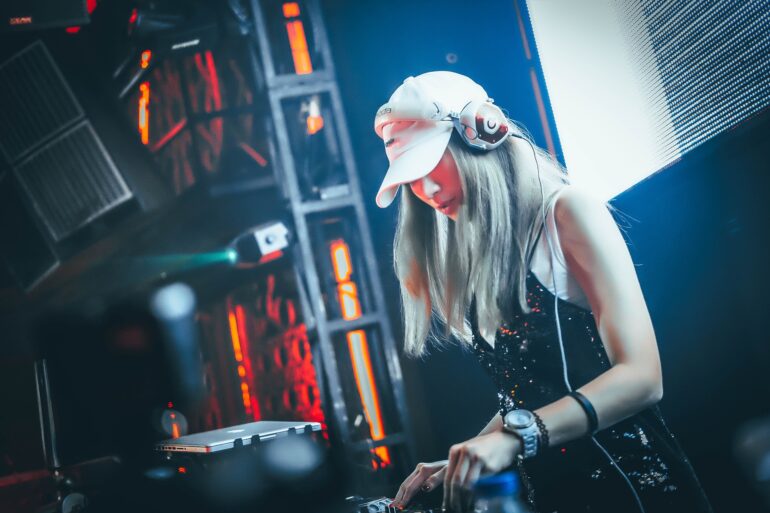TL;DR:
- DJs and producers in the dance music industry express concerns about AI-generated mixes replacing human DJs.
- DJs believe that the intimate connection they establish with the audience cannot be replicated by AI.
- Budget constraints have led to a rise in requests for streamed DJ sets, potentially replacing physical performances.
- AI-generated music is seen as a potential threat to DJs and producers, although it is not yet at a level to match human emotional intelligence.
- The use of AI in music production raises questions about the future of the industry and the need for a dialogue between music professionals and AI developers.
- Taxing AI companies and investing revenue in training programs for those affected by AI job displacement is suggested as a solution.
- The influence of AI on the music market will depend on public acceptance and the quality of AI-generated music.
- While commercial music may remain largely unaffected, “background” music in TV shows and films could be more susceptible to AI.
- The music industry needs to adapt, regulate, and view AI as a collaborator rather than an adversary.
Main AI News:
In the heart of a pulsating club, where vibrant music reverberates and lights dance in harmony, one might expect to find a DJ passionately controlling the rhythm. However, imagine a scenario where the DJ booth remains unoccupied, as an AI-generated mix takes charge. As mixing software becomes increasingly sophisticated and venues face budget constraints, concerns arise within the dance music industry. Can a computer program ever replace the genuine connection between a DJ and the crowd?
In the opinion of Nooriyah, a 28-year-old DJ based in London, the answer is a resounding no. Nooriyah, who has graced stages around the world, captivating crowds of over 40,000, acknowledges the presence of AI programs in her industry for several years. These programs recommend songs to mix based on their tempos. Yet, they have not encroached upon Nooriyah’s domain, and she believes she knows why.
“The way I connect with my audiences is incredibly difficult to replicate,” she explains. Nooriyah paints a vivid picture of a raver, glancing over to witness her exertion and dance moves mirroring their own. In that transcendent moment, an intimate connection is forged—an experience that AI could never hope to emulate.
Hannah Rose, who discovered her passion for DJing during the lockdown, aspires to make it her primary source of income. While she secures numerous opportunities, she has noticed a trend of venues reducing budgets due to the strain of the cost-of-living crisis. Hannah shares her observations: “Since Covid, there has been a significant shift towards streaming sets. Particularly when it comes to international venues, lacking the resources to fly artists to their location, streaming offers an accessible and cost-effective way to include them in their lineups without physical presence.”
Hannah has already noticed the prevalence of cameras behind DJ decks, set up for streaming purposes. Now, she harbors concerns that this trend may extend to virtual sets. “While AI has a long way to go in matching human emotional intelligence, the prospect of AI generating original compositions paints a rather bleak future for DJs,” she laments.
In March of this year, an East London venue hosted an AI rave, which garnered mixed reviews. Some attendees described the music as “dry and empty.” While it appears that humans excel in the role of DJs, the situation is not as straightforward for producers.
Nooriyah, apart from being a DJ, is also a talented music producer. Her creative process involves exploring various sounds through software, culminating in the mastering of tracks. However, AI is starting to encroach on this final stage. She emphasizes the urgent need for a dialogue between the music industry and AI developers regarding the role of AI in music production.
“The conversation about AI in producing is long overdue,” she asserts. “There are already a plethora of software programs capable of mixing music, potentially rendering producers obsolete.” Nooriyah advocates for a solution that involves taxing AI companies. “Firstly, let’s slow down the release of these AI programs and impose taxes on their developers. The revenue generated from these taxes can then be invested in training programs for those who lose their jobs to AI.”
Phil Kear, who collaborates with the Music Union, shares Nooriyah’s concerns. He worries that AI will impose limitations on the amount people are willing to pay for music created by human artists. “AI-generated music will undoubtedly be cheaper,” he notes. “This affordability might tempt establishments like bars to employ AI. However, the extent of AI’s influence will ultimately be determined by the general public’s willingness to accept it and the quality of music it can produce.”
Phil predicts that the majority of commercial music may remain unaffected, but he highlights the potential vulnerability of “background” music, particularly in television shows and films. “The public will likely be more accepting of AI-generated music in those contexts since no personal connection is associated with it. However, in bars and clubs, where a certain investment is made, the acceptance of AI remains to be seen.”
Conclusion:
The rise of AI in dance music presents both challenges and opportunities for the market. While AI-generated mixes and music have the potential to offer cost-effective solutions and new creative possibilities, they cannot fully replicate the unique connection and emotional intelligence that human DJs and producers bring. The industry must engage in meaningful discussions with AI developers, establish regulations, and consider taxation to ensure a balanced and sustainable future. The market will need to navigate public acceptance, quality concerns, and potential impacts on pricing and employment within the music industry. By embracing AI as a collaborative tool, the music market can harness its potential while preserving the essence and artistry of human creativity.

